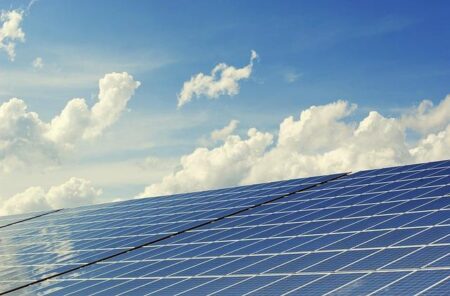India is urging manufacturers to produce air conditioners with milder temperature settings as part of a broader effort to reduce energy consumption and tackle the country’s growing power demand. This initiative, highlighted in a recent AP News report, reflects the government’s commitment to promoting energy efficiency and environmental sustainability amid rising temperatures and increased use of cooling appliances. By encouraging the adoption of more moderate cooling standards, India aims to lower electricity usage, ease pressure on the grid, and contribute to its climate goals.
India Pushes for Air Conditioners with Milder Temperature Settings to Reduce Energy Consumption
In an ambitious move to curb escalating power demands during peak summer months, Indian authorities are advocating for air conditioners to incorporate milder temperature settings as a standard feature. The initiative aims to encourage manufacturers to design units optimized for energy efficiency without compromising user comfort. By promoting temperature settings closer to 26-28°C rather than the customary cooler ranges, the government expects significant reductions in electricity consumption, thereby alleviating pressure on the national grid. This policy aligns with India’s broader commitment to sustainable development and combating climate change.
Key expected benefits include:
- Lower electricity bills for consumers
- Decreased greenhouse gas emissions
- Enhanced appliance longevity due to less strain
- Reduced likelihood of blackouts during heatwaves
| Temperature Setting | Energy Consumption Reduction | Comfort Impact |
|---|---|---|
| 24°C (Traditional) | Baseline | High cooling, higher energy use |
| 26°C (Recommended) | ~20% reduction | Comfortable for most climates |
| 28°C (Optimal) | ~35% reduction | Moderate cooling, energy efficient |
Energy Efficiency Gains Expected from Revised AC Standards in India
With India’s push for sustainable living gaining momentum, a significant revision in air conditioner manufacturing standards is set to reshape the energy consumption landscape. The new regulations encourage manufacturers to design AC units optimized for milder temperature settings, typically around 26 to 28 degrees Celsius, rather than extremely low temperatures. This shift aims to reduce the immense electricity demand during peak summer periods, directly contributing to a projected 20-25% reduction in residential energy use. Policy experts suggest that this gradual transition could ease pressure on the national grid and help lower carbon emissions substantially over the next decade.
Key benefits expected from these revised standards include:
- Decreased electric load: Lower cooling thresholds mean ACs consume less power.
- Financial savings: Consumers stand to save on monthly energy bills without compromising comfort.
- Enhanced product innovation: Manufacturers are incentivized to develop more energy-efficient compressors and refrigerants.
| Parameter | Current Standard | Revised Standard |
|---|---|---|
| Temperature Setting Range | 18-22°C | 26-28°C |
| Energy Consumption | High | Moderate |
| Expected Savings | – | 20-25% |
Experts Recommend Consumer Awareness and Policy Support to Maximize Cooling Savings
Industry experts emphasize that enhancing consumer knowledge is pivotal to unlocking the full potential of energy savings linked to air conditioner usage. Many households remain unaware of the significant impact that adjusting temperature settings can have on electricity bills and environmental sustainability. Experts suggest focused awareness campaigns highlighting simple habits such as setting thermostats to 24-26°C and regular maintenance can collectively reduce peak energy demand considerably.
Alongside consumer education, policy frameworks must evolve to support the adoption of energy-efficient cooling technologies and practices. Recommended measures include:
- Incentivizing manufacturers to produce air conditioners optimized for milder temperature ranges.
- Implementing minimum energy performance standards aligned with climate-responsive settings.
- Launching rebate programs that encourage consumers to switch to inverter and high SEER-rated models.
| Policy Element | Expected Impact |
|---|---|
| Energy Efficiency Labeling | 30% Reduction in Power Usage |
| Consumer Education Programs | 20% Improved User Adoption |
| Rebate Incentives | Increase in High-Performance AC Sales |
In Summary
As India moves forward with its proposal to standardize air conditioner temperature settings at milder levels, the initiative reflects the country’s broader commitment to energy conservation and environmental sustainability. While the measure aims to reduce electricity demand during peak summer months, its success will depend on widespread adoption and compliance by manufacturers and consumers alike. As this policy develops, stakeholders will be watching closely to evaluate its impact on energy usage and the fight against rising global temperatures.




